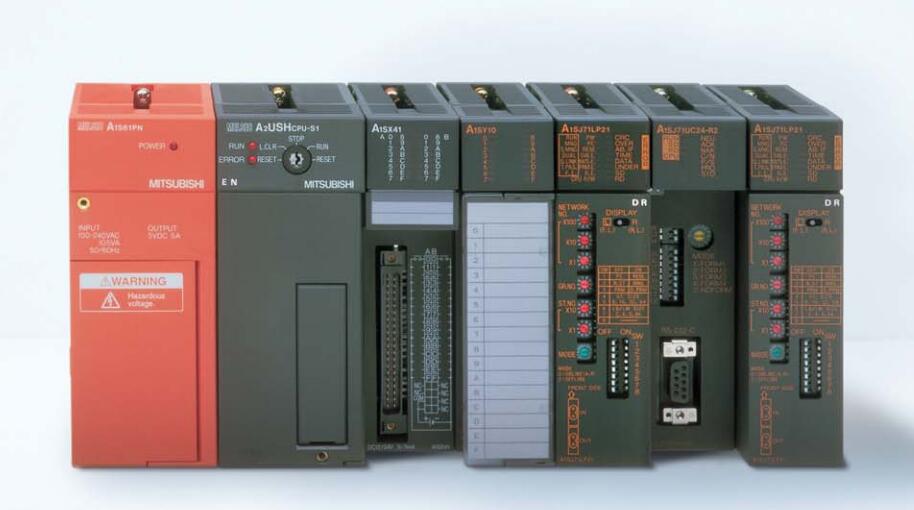Home
>> Products
>> MITSUBISHI
>> Ans/QnAs series PLC
>> Ans/QnAs series accessories
>> A1S-TA32-7 32: terminal line adapter
A1S-TA32-7 32: terminal line adapter
MITSUBISHI A1S-TA32-7 Manual And Instructions
A1S-TA32-7 datasheetPDF datasheet
MITSUBISHI A1S-TA32-7 Product information and technical parameters:
Brand: MITSUBISHI
Name: 32: terminal line adapter
Model: A1S-TA32-7
32: terminal line adapter 0.75mm2 (AGW18).
...More relevant models >>>>
A1S-TA32-7 datasheetPDF datasheet
MITSUBISHI A1S-TA32-7 Product information and technical parameters:
Brand: MITSUBISHI
Name: 32: terminal line adapter
Model: A1S-TA32-7
32: terminal line adapter 0.75mm2 (AGW18).
Interface: RS232C.
Transmission distance: 15 meters.
A1SJ71UC24-R2/R4/PR computer communication components can be relied on external intelligent devices such as computers and PLC for communication, the components are as follows:
Full / half duplex transmission,
4 special communication protocols,
No protocol and bidirectional mode,
Protocol selection switch function,
The optional baud rate, the highest 19 A1S-TA32-7 A1S-TA32-7 2K,
Since the echo diagnostic test. Input points: 32 points.
Input voltage and current: 7mA DC24V.
Input response time: 10ms.
16 point /1 a public side.
Positive pole sharing.
Output points: 24 points.
Output voltage: DC24V.
OFF leakage current: 0.1mA.
Output response time: 12ms.
Output type: transistor output A1S-TA32-7.
8 point /1 a public side.
With the surge absorber.
34 point terminal station.
PLC is introduced by the relay control technology after the development of micro processing technology,
Can be easily and reliably used for switching control.
As the analog quantity can be converted into digital quantity, the number of digital quantity is just a number of switching value,
Therefore, after the conversion of analog, PLC can also be reliable for processing control A1S-TA32-7.
Because the continuous production process often has the analog quantity, the analog quantity control is sometimes called process control.
Analog quantity is not electricity, and PLC can only handle digital quantity, quantity of electricity.
All to realize the conversion between them to have the sensor, the analog quantity into a number of power.
If this power is not standard, but also through the transmitter,
The non-standard power into a standard electrical signal, such as 1-5V, 4-20mA, 0-10V, etc..
At the same time, there is also an analog input unit (A/D),
Transform these standard ellectrical signals into digital signals,
The analog output unit (D/A), in order to transform the digital quantity after PLC processing into analog quantity -- standard electric signal A1S-TA32-7.
So the standard telecommunication number, the conversiion between the number of operations to use a variety of computing A1S-TA32-7.
This requires the resolution of the analog unit and the standard electrical signal.
Transmission distance: 15 meters.
A1SJ71UC24-R2/R4/PR computer communication components can be relied on external intelligent devices such as computers and PLC for communication, the components are as follows:
Full / half duplex transmission,
4 special communication protocols,
No protocol and bidirectional mode,
Protocol selection switch function,
The optional baud rate, the highest 19 A1S-TA32-7 A1S-TA32-7 2K,
Since the echo diagnostic test. Input points: 32 points.
Input voltage and current: 7mA DC24V.
Input response time: 10ms.
16 point /1 a public side.
Positive pole sharing.
Output points: 24 points.
Output voltage: DC24V.
OFF leakage current: 0.1mA.
Output response time: 12ms.
Output type: transistor output A1S-TA32-7.
8 point /1 a public side.
With the surge absorber.
34 point terminal station.
PLC is introduced by the relay control technology after the development of micro processing technology,
Can be easily and reliably used for switching control.
As the analog quantity can be converted into digital quantity, the number of digital quantity is just a number of switching value,
Therefore, after the conversion of analog, PLC can also be reliable for processing control A1S-TA32-7.
Because the continuous production process often has the analog quantity, the analog quantity control is sometimes called process control.
Analog quantity is not electricity, and PLC can only handle digital quantity, quantity of electricity.
All to realize the conversion between them to have the sensor, the analog quantity into a number of power.
If this power is not standard, but also through the transmitter,
The non-standard power into a standard electrical signal, such as 1-5V, 4-20mA, 0-10V, etc..
At the same time, there is also an analog input unit (A/D),
Transform these standard ellectrical signals into digital signals,
The analog output unit (D/A), in order to transform the digital quantity after PLC processing into analog quantity -- standard electric signal A1S-TA32-7.
So the standard telecommunication number, the conversiion between the number of operations to use a variety of computing A1S-TA32-7.
This requires the resolution of the analog unit and the standard electrical signal.
...More relevant models >>>>
 Last one: MITSUBISHI 32: terminal line adapter A1S-TA32-3
Last one: MITSUBISHI 32: terminal line adapter A1S-TA32-3 next one: MITSUBISHI 32: terminal line adapter A1S-TB32
next one: MITSUBISHI 32: terminal line adapter A1S-TB32
Related download

